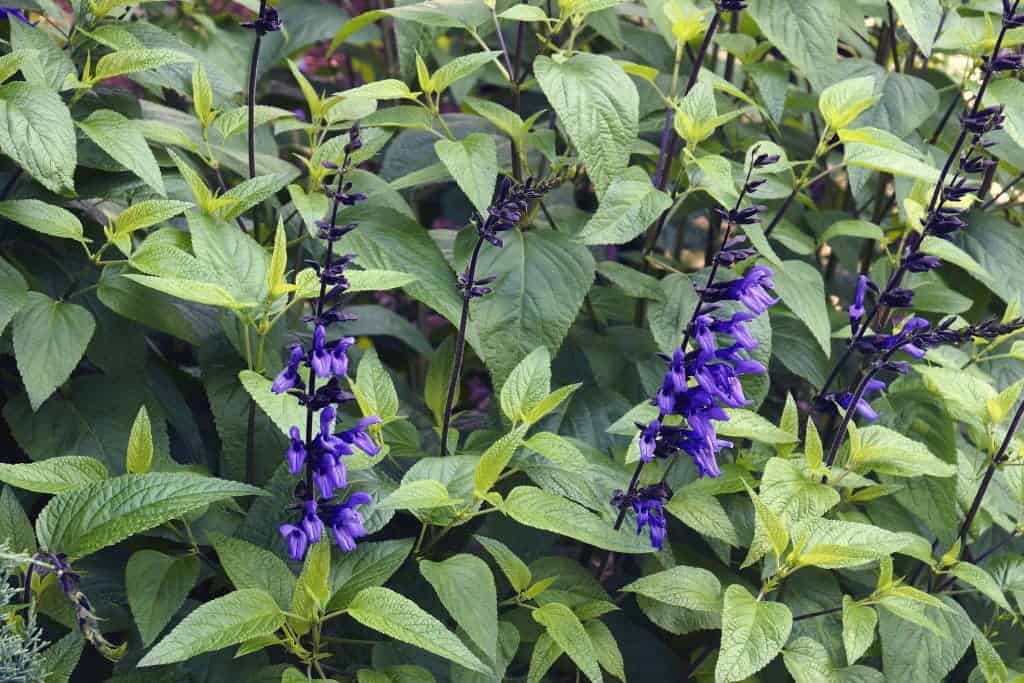Like all flowering plants, salvias are rewarding perennials since they give you these stunning purple blooms that last through early summer.
Although they’re pretty hardy, salvias are also prone to several issues that can throw a seasoned gardener for a loop. So if you think your salvia plant is at the end of its rope, you better step back before you start the process of uprooting it because you might be making these mistakes when it comes to maintaining them.

1. Lack of sun exposure
Salvias are light-loving plants that’s why they thrive most in hot and arid climates. Ideally, salvias will need up to 8 hours of daily sun exposure to feel healthy. So if you plant them in a shaded area, you’ll notice that they will take a while to bloom.
Although it’s not unusual for young salvias not to grow flowers in their first year, they’ll usually sprout their blooms in the following years. Leggy and drooping salvias are also signs of a lack of sunlight. So if you notice your plant is growing taller or still flowerless by the beginning of summer, it might be time for you to replant them to a sunnier section of your garden.
2. Excess nutrients
Salvias look their best when they’re growing tall and compact, but if you notice your plants are leaning more toward the ground it might be a sign of excess nutrients in the soil.
Although salvias may benefit from a few occasional drops of fertilizer to encourage their growth, overdoing it can cause their stems to droop as they become too heavy for their roots. If you’re guilty of being heavy-handed on fertilizing this season, a simple way of solving this problem is by pruning any flopping stems and deadheading them wherever possible.
This is also a quick way of propagating your salvias and encouraging the mother plant to grow healthier and lusher flowers for next spring!
3. Dehydrated
Plants will usually tell you if they’re dehydrated through their browning and wilting leaves, and salvias are no exception to this rule. Even though they’re drought-tolerant, it’s still best to give them a drink once their soil is completely dried.
But also remember not to go overboard because salvias don’t like to sit in wet or moist soil. You’ll know you’re overwatering your plant once you see some yellowing leaves by the base, but you can still remedy this by easing on the watering and letting its soil fully dry.
4. High humidity
Speaking of overwatering, leaving your salvia soaking in moist soil can also cause the humidity to rise. The extra moisture in the air can then lead to powdery mildew, which can cause its leaves to crisp up and die.
Milder cases of powdery mildew may not be as lethal, but it will stunt your salvia’s growth and prevents its flowers from blooming. Since powdery mildew is also easily spreadable, nearby plants can also start sprouting this invasive white fluff.
To get rid of the mildew, make sure to remove all of the infected leaves and keep your salvia in well-draining soil. If the infection is getting challenging to contain, you might need to invest in an organic fungicide. Just make sure to follow its instructions and keep your plant away from direct sunlight for a couple of days after application.
5. Insect infestations
Probably the most common enemy that gardeners will usually face is an infestation of harmful bugs on their plants. If you notice any holes in the leaves of your salvia plant, it may be a sign of a caterpillar, beetle, or aphid infestation.
It may be tempting to use a chemical insecticide to spray away these pests, but this will also drive away beneficial and pollinating insects away from your garden. Instead, try using an organic pesticide like neem oil or diatomaceous powder to curb away the insects from munching on your salvia’s leaves.
6. Temperature shock
If you’ve recently transplanted your salvia from one extreme condition to another, it might be experiencing shock from the sudden change in conditions.
If it came from a shady area and you moved it to a sunny location, the leaves may not handle the heat and will show signs of burning. If this is the case, scale back on watering your plant and move it to a shady area in the meantime so you can slowly introduce it to the sun in the next few weeks.
If it came from a warm indoor area and transferred to a cold winter garden the leaves can also turn brown and freeze up. If this happened to your salvia, move it back indoors and wait until the spring or summer before you reintroduce it to the sun and outdoor conditions.
To prepare your salvias for the winter, make sure they’re fully stable before winter comes so they can stay hardy once the frost hits. When planted correctly, salvias can typically return each year and have their flowers bloom by springtime.